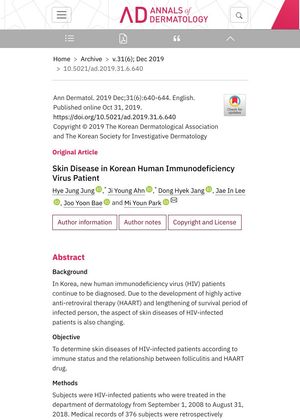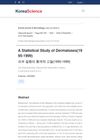Skin Disease in Korean HIV Patients
January 2019
in “
Annals of Dermatology
”

TLDR HIV patients in Korea often have skin diseases like fungal infections, folliculitis, and seborrheic dermatitis, which are less common with effective HIV treatment.
From 2008 to 2018, a study was conducted on 376 HIV-infected patients in Korea, investigating the prevalence of skin diseases. The most common skin diseases found were tinea infection, folliculitis, and seborrheic dermatitis, regardless of the patients' CD4 T cell counts or treatment group. Patients with CD4+T cells less than 200×106 cells/L had a higher incidence of seborrheic dermatitis, irritant contact dermatitis, and pruritic papular eruption, while warts were more common in patients with CD4+T cells greater than 200×106 cells/L. The study also found that most highly active anti-retroviral therapy (HAART) agents helped reduce the incidence of folliculitis. The study concluded that the development of HAART and the increased survival period of infected persons have changed the landscape of skin diseases in HIV-infected patients. However, the study had limitations, including being a retrospective investigation conducted in a single institution, and excluding patients with certain conditions. More multi-institutional studies were recommended for the future.

